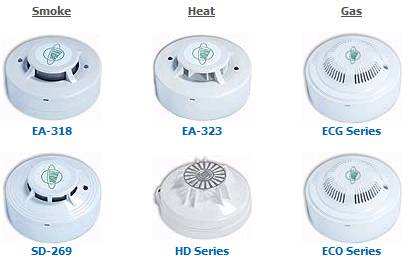-
Flame detector
A flame detector is a sensor designed to detect and respond to the presence of a flame or fire. Responses to a detected flame depend on the installation, but can include sounding an alarm, deactivating a fuel line (such as a propane or a natural gas line), and activating a fire suppression system. A flame detector can often respond faster and more accurately than a smoke or heat detector due to the mechanisms it uses to detect the flame.
Position of detectors
Detectors shall be located for optimum performance. Position near beams and ventilation ducts or other positions where patterns of air flow could adversely affect performance and positions where impact or physical damage is likely shall be avoided. Detectors which are located on the overhead shall be a minimum distance of 0.5 m away from bulkheads, except in corridors, lockers and stairways.



what about the flame detector,principle,location of flame detector ,maximum floor area,
which detector best
how can we test heat detectors on board?